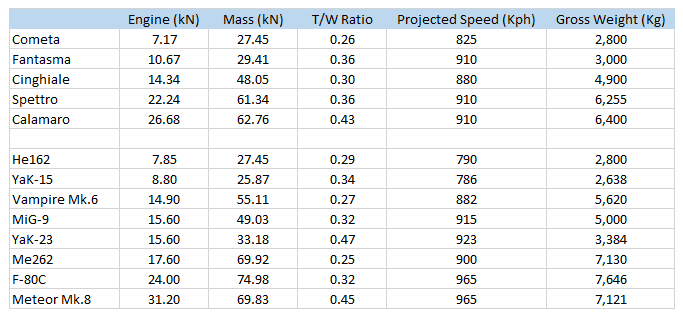You are not logged in.
Dear visitor, welcome to WesWorld. If this is your first visit here, please read the Help. It explains in detail how this page works. To use all features of this page, you should consider registering. Please use the registration form, to register here or read more information about the registration process. If you are already registered, please login here.
This post has been edited 1 times, last edit by "snip" (Oct 15th 2013, 7:01am)
This post has been edited 1 times, last edit by "snip" (Oct 16th 2013, 1:59am)

Quoted
Originally posted by Hood
Bruce's data certainly is a good starting point and your changes look along the right lines.
It looks like your developing three engines during the 1940s (1,600lb, 2,400-2,600 which might stretch to 3,000lb and the 5,000lb). That seems reasonable given Italy's engine capacity.
Whether these are axial or centrifugal will further alter things. I would say the 2,400, 2,600 and 3,000lb engines would have to be axials to allow twin internal engines and the 5,000lb would also be best as an axial, probably being developed into 6,500-7,000lb and more for the 1950s. The 1,600lb could be centrifugal to make max use of turbocharger know-how and speed development.
This post has been edited 3 times, last edit by "snip" (Oct 16th 2013, 7:02pm)
Forum Software: Burning Board® Lite 2.1.2 pl 1, developed by WoltLab® GmbH
